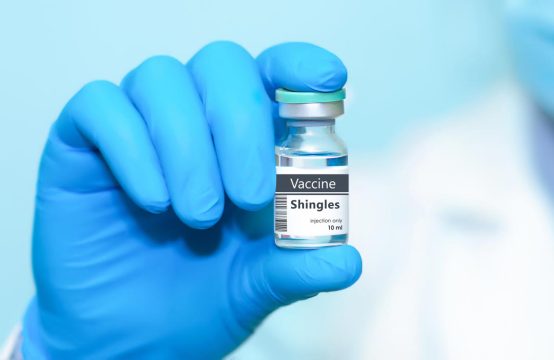Advertisment
BTS 2012 Report – Assessing the true cost of transplantation

by Maria Dalby – Introduction – Recent advances in transplant medicine and surgery mean more lives can be saved or prolonged with an organ transplantation, but also that the costs to the NHS are going through the roof. However, when looking at the costs of treatment and care, it is important to also bear in mind the less obvious costs, such as the cost of dialysis and/or a re-transplant in case of graft failure. Once again, Astellas brought together a panel of eminent speakers in a sponsored satellite symposium, to try and throw light on this complex issue.
Are drug costs the actual costs?
Varuna Aluvihare, King’s College Hospital, London
Immunosuppression accounts for a significant part of the overall cost of liver transplantation, and even more so in renal transplantation. Switching patients to generic alternatives on the basis of bioequivalence data may allow savings on the cost of the actual tablets, but it is important to view these cost savings in the context of the overall costs. Dr Varuna Aluvihare, consultant hepatologist from King’s College Hospital in London reminded the audience that bioequivalence does not always equate to clinical equivalence, and must not be allowed to replace the knowledge and judgement of experienced transplant surgeons.
Dr Aluvihare described the current state of liver transplantation within the NHS as at ‘crisis point’; the incidence of liver disease has risen significantly in recent years whilst organs are becoming increasingly scarce, forcing clinicians to use marginal donors and organs to an ever-increasing extent. The costs associated with transplantation are, in Dr Aluvihare’s words, ‘astronomical’: the remuneration for a liver transplantation at King’s College Hospital is in the region of £63,000, plus an assessment cost of nearly £6,000 and the cost of immunosuppressive therapy which ranges from around £1,500 to over £4,000 depending on the type and duration of treatment.1 By contrast, a kidney transplantation is less expensive at around £17,000, but with a cost of immunosuppressive therapy of at least £5,000 per patient per year, as renal transplant patients are treated with multiple agents for longer time. However, this must be weighed against the cost of keeping the patient alive in case of graft failure: the average cost of dialysis in the UK is over £30,000 per patient per year and accounts for 3% of the total NHS budget. The NHS Blood and Transplant authority estimates that each kidney transplantation is associated with a cost benefit of around £24,000; in 2008/09, kidney transplantations saved the NHS a total of over £50m in monitoring and dialysis costs.2 Seen in this perspective, the potential saving that could be made by switching to generic immunosuppressive agents at a lower tablet cost – around 20-30% of the overall cost of immunosuppressive treatment – represents only the tip of a very large iceberg of costs that is made up of not only the tablet cost, but also the costs of patient monitoring, all investigations and treatments, the actual cost of the transplant itself, and the huge cost of dialysis.
When considering switching patients to generic immunosuppressants, it is important to bear in mind the limitations of bioequivalence studies as performed under the current regulatory requirements. The EMA and FDA employ different criteria for bioequivalence, which means allegedly generic drugs may perform differently and may affect the potential for drug interactions with critical-dose drugs. And even more importantly, bioequivalence studies are done in healthy volunteers and do not take into account important patient-related factors such as variable gastrointestinal function and drug metabolism in the post-transplant period or the use of induction therapy. Studies in liver and renal transplant recipients have shown that whilst it is feasible to switch patients safely from one immunosuppressive agent to another post-transplant, most patients will require dose adjustment and the costs of intensified monitoring and clinic visits to accommodate the switch may well cancel out any savings on the drug costs.3-5
Switching patients from twice-daily to once-daily tacrolimus may also require dose adjustment and will require similar levels of monitoring as switching to a generic agent;6-7 however, in this case, there may be an additional saving to be made to the drug cost – non-adherence to immunosuppressive therapy has been shown to lead to an increase in the 3-year medical costs associated with transplantation of nearly $13,000.8 Offering patients to switch to a simplified once-daily regimen may therefore favour outcomes in the long run.
See below for references.
Once-daily tacrolimus: patient choice
Iain MacPhee, St George’s Hospital, London
Switching patients to a once-daily immunosuppressive regimen may offer increased convenience to many patients, and thus increase the likelihood that they remain adherent with the treatment regimen over time. Dr Iain McPhee, consultant nephrologist at St George’s Hospital in London, shared some of his centre’s experiences with offering renal transplant recipients the option to switch from Prograf® to Advagraf® post-transplant, which showed that patients tend to take a more pragmatic and practical view of their treatment than the clinician may expect.
The rationale for switching to a once-daily tacrolimus preparation is, in addition to greater convenience and compliance benefits, to reduce intra-patient variability in the pharmacokinetic profile of the drug, and reduce the potential for drug-induced toxicity by achieving the same AUC with a lower peak concentration. However, as it is well established that tacrolimus absorption is highly dependent on food intake,1 it is recommended that the drug is taken either one hour before, or two to three hours after a meal.
Renal transplant patients at St George’s Hospital were offered the option to switch from Prograf® to Advagraf® from 6 weeks post-transplant. Patients who chose to switch were converted to the same daily dose and monitored to ensure their plasma tacrolimus concentration remained within the therapeutic range. Convenience was the main reason for switching for most patients, in the form of once-daily dosing and also a dramatic reduction in the overall pill count. Patients typically found it easier to separate the treatment from meals in the morning than in the evening. The vast majority of patients who switched remained on Advagraf®; only 2 of 47 patients asked to change back to Prograf®. Conversely, patients who chose to remain on Prograf® tended to be reluctant to change a drug regimen that they felt was working well, and would have no problems remembering the evening dose or keeping it separate from the evening meal. Dr McPhee concluded that patients should be offered the option of switching, but that not all patients would necessarily perceive the switch as beneficial.
See below for references.
Tailoring immunosuppression in liver and kidney transplantation
Gabriel Oniscu, Royal Infirmary of Edinburgh
The emergence of novel tacrolimus formulations allows clinicians to tailor immunosuppression to individual patient needs. However, the decision to switch from one immunosuppressive agent to another must be take into account a number of important factors, on the one hand the side effect profile of the drug in question and the inter- and intra-patient variability in its pharmacokinetic profile, and on the other hand factors such as patient survival, graft function and compliance. Gabriel Oniscu, consultant transplant surgeon at the Royal Infirmary of Edinburgh, illustrated the risk associated with switching by describing a patient case, a 52-year old male liver transplant recipient who presented with headaches and tremor in November 2011 after having been on a stable dose of Prograf® for more than two years. It transpired that the patient had been switched to generic tacrolimus in the community by his own GP and developed tacrolimus toxicity; luckily the liver function tests proved normal and the patient was converted back to Prograf®. The potential for switching without the transplant clinician’s knowledge adds to the overall risk with generic immunosuppression, and together with the need for more frequent monitoring and intensified patient education will undermine any potential cost savings.1
The experience with kidney transplant patients in Edinburgh shows that the timing of the conversion may influence the dose and plasma levels of tacrolimus. Patients who were converted from Prograf® to Advagraf® more than 12 months post-transplant tended to remain on lower doses even at 12 and 18 months post-conversion with stable plasma trough levels within the therapeutic range. In contrast, patients who were converted during the first 12 months post-transplant remained on high doses, with plasma trough levels reaching 10 micrograms/l in the first three months and remaining above 7 micrograms/l even at 24 months post-conversion (ie three years post-transplant). Similar observations were made in a more challenging patient group, namely patients undergoing simultaneous pancreas and kidney transplantation (SPK) although adverse effect on clinical outcomes (serum creatinine levels, blood glucose and HbA1c) were seen. Mr Oniscu concluded that the choice of immunosuppression must be made based on a wide-ranging assessment of all benefits and risks to the patient and taking patient preference into account, but that there will never be a ‘one size fits all’ solution.
See below for references.
Section One References:
- Data on File, King’s College Hospital Liver Unit, 2010
- NHS Blood and Transplant, January 2012
- Momper JD, Ridenour TA, Schonder KS, et al. The impact of conversion from prograf to generic tacrolimus in liver and kidney transplant recipients with stable graft function. Am J Transplant 2011; 11(9): 1861-1867
- Klintmalm GB. Immunosuppression, generic drugs and the FDA. Am J Transplant 2011; 11(9): 1765-1766
- McDevitt-Potter LM, Sadaka B, Tichy EM, et al. A multicenter experience with generic tacrolimus conversion. Transplantation 2011; 92(6): 653-657
- Guirado L, Cantarell C, Franco A, et al. Efficacy and safety of conversion from twice-daily to once-daily tacrolimus in a large cohort of stable kidney transplant recipients. Am J Transplant 2011; 11(9): 1965-1971
- Data on File, King’s College Hospital Liver Unit, 2010
- Pinsky BW, Takemoto SK, Lentine KL, et al. Transplant outcomes and economic costs associated with patient noncompliance to immunosuppression. Am J Transplant 2009; 9(11): 2597-2606
Section Two References:
- Jusko WJ, Piekoszewski W, Klintmalm GB, et al. Pharmacokinetics of tacrolimus in liver transplant patients. Clin Pharmacol Ther 1995; 57(3): 281-290
- Prograf Summary of Product Characteristics.
Section Three Reference:
- Harrison JJ, Schiff JR, Coursol CJ, et al. Generic immunosuppression in solid organ transplantation: a Canadian perspective. Transplantation 2012 [epub ahead of print]





